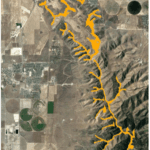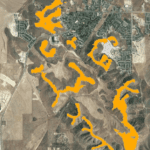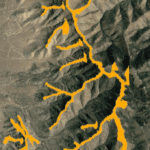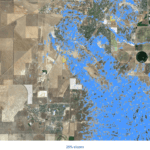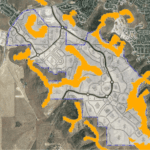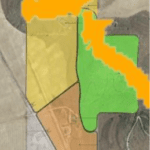In October 2017 the Planing Commission held a public hearing in regards to a proposed Ridgeline Protection Overlay Zone. At that time the Planning Commission approved the City Staff recommendations. The Overlay Zone was then sent to the City Council, which held a public hearing in November of 2017. The proposal was discussed and direction was given to the City Staff for some changes to be made. The City Staff worked on the proposal and then brought it back to the City Council for vote on January 16th, 2018. The City Council then voted to approve the Ridgeline Overlay zone with a 5-0 vote. It should be noted that the process started out with a Ridgeline Protection Overlay Zone, but what was approved by the Council was a set of codes that contain standards, rather than an overlay zone.
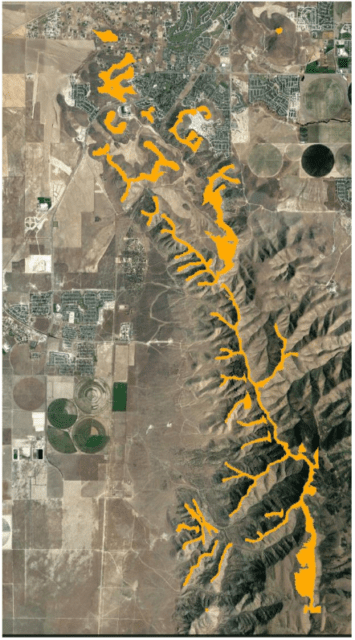
 In a recent blog post on “Mayor’s Voice“, Tom Westmoreland the current Eagle Mountain Mayor, made the following statement about the Ridgeline Protection Code. “The City Council recently approved a Ridgeline Protection Ordinance. This needed to be done to protect our scenic hilltops from development.” He gives a little more detail in a post he made on the Mayor Tom Westmoreland Facebook page. “I am very pleased to announce that after months of work by staff and council working with land owners, last night city council approved a ridge line protection ordinance. This will prohibit development on hilltops, preserving open space and views. There is more work to be done but this is a significant milestone as we work to make Eagle Mountain an extraordinary place to live, work, and play, now and in the future.”
In a recent blog post on “Mayor’s Voice“, Tom Westmoreland the current Eagle Mountain Mayor, made the following statement about the Ridgeline Protection Code. “The City Council recently approved a Ridgeline Protection Ordinance. This needed to be done to protect our scenic hilltops from development.” He gives a little more detail in a post he made on the Mayor Tom Westmoreland Facebook page. “I am very pleased to announce that after months of work by staff and council working with land owners, last night city council approved a ridge line protection ordinance. This will prohibit development on hilltops, preserving open space and views. There is more work to be done but this is a significant milestone as we work to make Eagle Mountain an extraordinary place to live, work, and play, now and in the future.”
The Staff Report states the purpose of the Ridgeline Protection Code.
This proposal designates prominent ridgelines within the city, and prevents building within fifty vertical feet (50’) of prominent ridglines. This code also creates development standards for property located within in close proximity to prominent ridgelines, provides for an integrated ridgeline trail system, and allows the density transfer for otherwise buildable land rendered unbuildable by this code.
In tandem with the Hillside Development standards this ordinance will protect significant ridgelines from development, staff plans to revise hillside development standards in the future for develop-able hillside property
The Ridgeline Protection Code has several Prominent Ridgelines identified on several maps throughout the city.
The Ridgeline Protection Code makes it so that certain development cannot occur in an area that is protected new code.
Property within fifty (50) vertical feet of prominent ridges, may be included within private lots, however, shall be deemed unbuildable, and shall provide a public pedestrian easement to the City for the purpose of creating an integrated and connected system of ridgeline trails, which tie into neighboring development.
No structure, accessory structure, or ancillary structure may be built within the Ridgeline Setback Area, with the exception of Public Infrastructure, public lookout towers, benches, or other public viewpoint or recreation structures. No cuts, fills, clearing, or grading shall occur within the Ridgeline Setback, except for public trails, structures, and infrastructure.
The council had some discussion on the topic of Dedication vs Easement for the protection code. Dedication is when the developer would donate the real property to the City of Eagle Mountain for a public purpose. Easement is a right of crossing, in this case it would be a for public access or pedestrian access.
Steve Mumford, the Eagle Mountain Community Development Director, gives some more details on this subject. “As far as land dedication vs easements, the developer can decide which one to propose, and the City Council can ultimately make the decision. We included both options in the code simply because they both accomplish the same goal – to preserve the ridgetops from development and make them available for trail systems so that all residents can benefit. Property owners can then choose whether they want to allow others to cross through their property on a trail, or whether they want to dedicate that property to the City. Both have their benefits and drawbacks.”
One of the differences is property tax. With the easement the property owner would be liable for property taxes on the areas with the easement, but with dedication the resident gives the land to the city so they are no longer liable for property taxes on that portion of the land.
Additional Resources
Mayor’s Voice
Mayor Tom Westmoreland Facebook Page
Mike Kieffer – Editor-in-Chief, Cedar Valley Sentinel
Mike Kieffer is a dynamic leader and community advocate based in Eagle Mountain, Utah. He serves as the Editor-in-Chief of the Cedar Valley Sentinel, a local publication dedicated to informing, inspiring, and elevating the Cedar Valley community through honest and accurate journalism. With a passion for fostering connections, Kieffer has made it his mission to highlight local businesses, provide reliable news, and support community development.
Beyond his editorial role, Kieffer is the owner of Lake Mountain Media, LLC, a company specializing in media and communications, and the co-owner of Quail Run Farms, which focuses on sustainable farming and community engagement. He also actively contributes to the local economy and culture as a member of the Eagle Mountain Chamber of Commerce.
Kieffer’s dedication extends to preserving and promoting the history and heritage of the Cedar Valley area. He often participates in community-centered events and media, including podcasts that explore the unique aspects of life in the region. Through his varied endeavors, he remains a steadfast advocate for the growth and enrichment of the local community.


